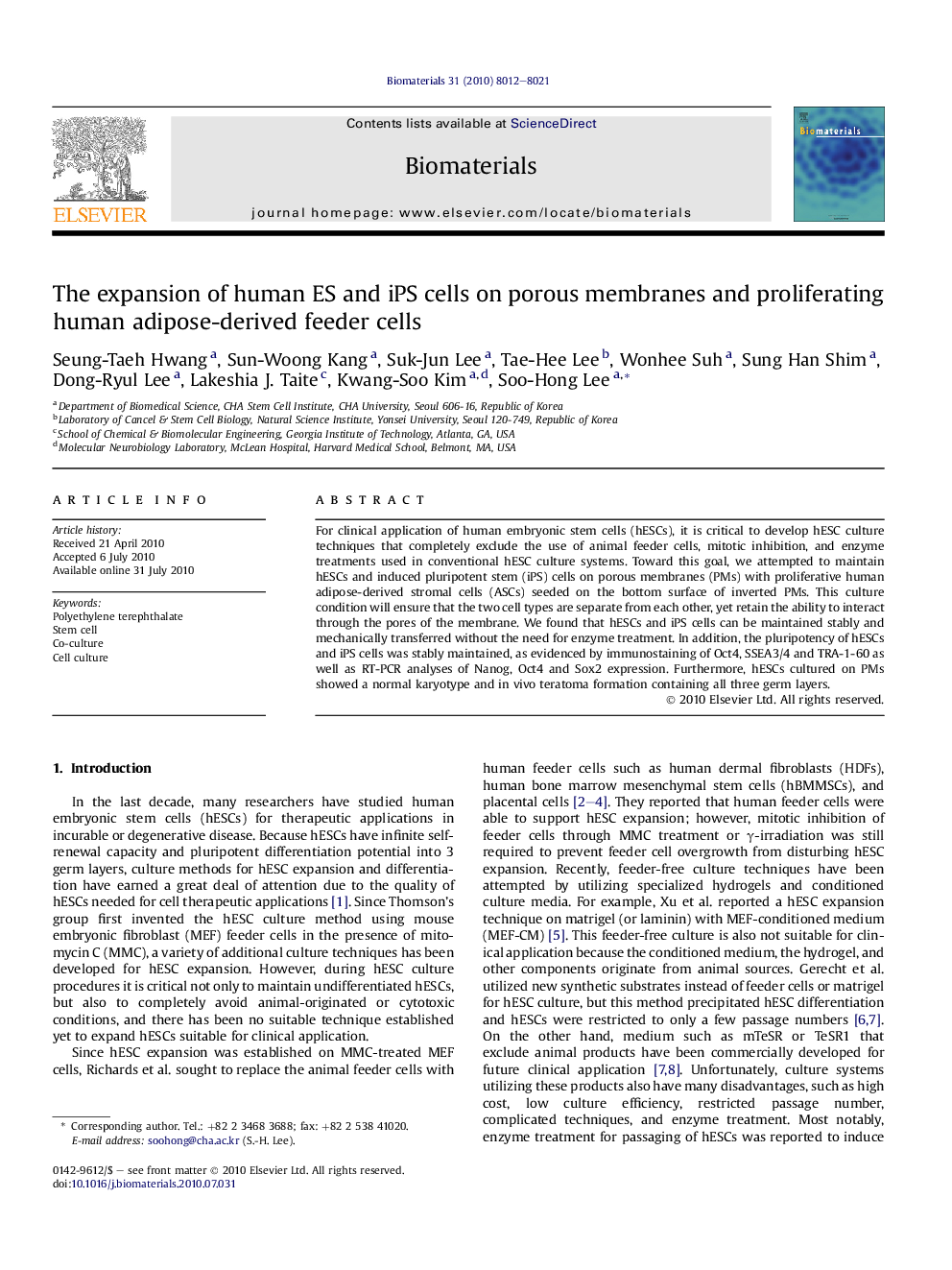| Article ID | Journal | Published Year | Pages | File Type |
|---|---|---|---|---|
| 8057 | Biomaterials | 2010 | 10 Pages |
For clinical application of human embryonic stem cells (hESCs), it is critical to develop hESC culture techniques that completely exclude the use of animal feeder cells, mitotic inhibition, and enzyme treatments used in conventional hESC culture systems. Toward this goal, we attempted to maintain hESCs and induced pluripotent stem (iPS) cells on porous membranes (PMs) with proliferative human adipose-derived stromal cells (ASCs) seeded on the bottom surface of inverted PMs. This culture condition will ensure that the two cell types are separate from each other, yet retain the ability to interact through the pores of the membrane. We found that hESCs and iPS cells can be maintained stably and mechanically transferred without the need for enzyme treatment. In addition, the pluripotency of hESCs and iPS cells was stably maintained, as evidenced by immunostaining of Oct4, SSEA3/4 and TRA-1-60 as well as RT-PCR analyses of Nanog, Oct4 and Sox2 expression. Furthermore, hESCs cultured on PMs showed a normal karyotype and in vivo teratoma formation containing all three germ layers.
